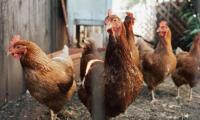A little over half-way through the current financial year, Pakistan’s economic outlook looks strong for 2021. Several indicators reveal that our economy has done well in spite of the Covid-19 pandemic setbacks, with year-on-year improvements in key indices.
These have been well reported in the media, but some are worth reiterating here. Large Scale Manufacturing Industries (LSMI) saw 7.41 percent growth during the first five months (July-November 2020) of the current financial year compared to the same period in 2019 and exports grew in December for the 4th consecutive month, up 18.3 percent from December 2019.
Tax collection improved with the FBR collecting Rs2,204 billion in taxes during the first half of the current financial year, compared to Rs2,101 during the first half of the previous financial year, representing about 5 percent growth. Foreign remittances by overseas Pakistanis were a record-setting above $2 billion for 7 consecutive months, while YoY growth in remittances was 16.2 percent just in December 2020. And the cherry on top was our improved ranking on the World Bank’s Ease of Doing Business (EODB) Index by 28 points from 136 to 108.
But all the good news notwithstanding, cautious optimism is advised and other realities - potential threats for sustainable growth, should not be ignored. For example public debt is at the highest level ever, as is the circular debt; and inflation is getting stronger all the time.
Trade deficit also increased by nearly 6 percent, while FDI dropped by about 30 percent in the first six months of the current financial year. And while export revenues increased, so did our imports bill, going up by 5.51 percent.
Of even more concern is the fact that while Pakistan is still largely an agricultural country, we are regularly importing wheat, sugar, pulses and other commodities, instead of being self-sufficient in these staples, keeping in mind especially the need for food security in the future for a fast growing population. Our food import bill shot up by over 52 percent in the first half (July-December) of the current financial year.
So, while the government’s economic team is to be lauded for kick-starting an economic turnaround, measures are also necessary for longer term stability and sustainable growth. Take for example the textile sector, which has contributed hugely in this financial year to exports growth.
The exponential rise in home remittances is a blessing, but economic growth cannot be based on the hope that the trend will continue forever. Growth has to come from industry and from exports.
And while one fully agrees with the indomitable Dr Ishrat Hussain that Pakistan needs to invest in sunrise industries - those that are new and growing, like the engineering sector and commercial services, especially Information Technology (IT) and IT-enabled services, this does not have to come at the cost of the textile sector, which for long has been one of our greatest strengths.
Both can be catalysed for growth simultaneously and prudence is not diverting attention from our core strength, the textile sector.
There is potential for substantial growth in textile exports if we take the right steps and remove the hurdles. First, it is imperative that textile exports as a whole continue to move rapidly from low-priced items to high value-added finished products like quilt covers, embroidered cushions, sheets, pillows, comforters etc.
This requires investment not only in hardware but also in systems, quality, and training. Second, the government should have a rigorous plan for extending Pakistan’s GSP Plus status, expiring in 2023, as frankly speaking, the GSP Plus facility was perhaps the only reason Pakistan was able to sustain textile exports growth. We need to understand and urgently address all the concerns of the EU in order to get extension of the GSP Plus status.
As far as the threats to sustainable growth of the textile industry are concerned, here only two are being highlighted. First is the fall in cotton production that has dropped from nearly 14 million to eight million bales, resulting in the need to import cotton for manufacturing superior products. Cotton crops over the years have been replaced by other crops such as sugarcane, and if we have to import cotton to export finished products, then we have already lost our competitive advantage.
The second critical threat is the poor availability and high price of energy, compromising our export deliveries and rendering us uncompetitive. If there is a disruption in energy supply owing to the ongoing gas shortage scenario, it could even lead to industry closing down and export orders cancellation, or at least impacting timely shipments. If the inefficiencies and losses in the electricity supply are removed once and for all, not only will the textile industry benefit, but the whole country will.
Pakistani entrepreneurs have time and again proved that given a level playing field, they can compete against the best in the world. We are not short on innovation and taking bold decisions.
The sky is really the limit for our textile exports to grow and contribute substantially not only to foreign exchange earnings but also to overall sustainable economic growth.
The writer is industry professional
In this picture, the PCJCCI logo can be seen on September 1, 2022. — Facebook/Pakistan China Joint Chamber of...
A representational image of a US flag pictured alongside a street sign reading "Wall Street" in the New York city. —...
A security guard sits in front of a wall with signs and slogans at the operation building at the Pakistan Steel Mills ...
A worker cleans the entrance to the headquarters of Bank Indonesia, the nation's central bank, in Jakarta, Indonesia....
The MCB's logo is seen on a wall outside the bank's head office. — MCB websiteKARACHI: MCB Bank Limited on...
A foreign currency dealer counts US dollars at a shop in Karachi. — AFP/FileKARACHI: The rupee lost ground against...







